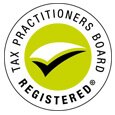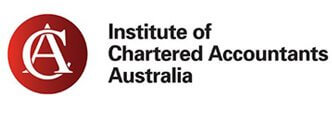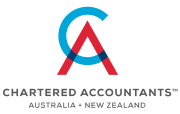
If you’re a small business owner operating through a company, you’ve probably wondered: “Can I just transfer money from the company account to my personal one?”
The short answer? Technically yes – but not without tax consequences.
That’s where Division 7A (Div 7A) of the Australian tax law comes in. It’s one of the most commonly encountered – yet often misunderstood – areas of tax compliance for business owners. So, let’s break it down in simple terms.
What is Division 7A?
Division 7A is a set of provisions within the Income Tax Assessment Act that prevents private companies from making tax-free payments or loans to shareholders (or their associates). These rules ensure that funds taken out of a company are either treated as dividends or managed as formal loans, both of which have tax implications.
Why is this important?
Here’s the key takeaway: Money in your company belongs to the company – not you personally.
Even though you might own the business, the company is a separate legal entity. That means withdrawing company funds for personal use can attract serious scrutiny from the ATO.
The company itself may pay tax at the corporate rate of 25%, but when profits are distributed to you as a shareholder, they must generally be declared as dividends and taxed at your personal marginal tax rate – which could be as high as 45% with franking credits attached (company tax already paid).
Division 7A exists to prevent individuals from bypassing this by simply “borrowing” money from the business.
So, what happens if you take money from your company?
If you, or someone connected to you, takes money out of the company without proper structure, Division 7A could deem that amount an unfranked dividend, meaning it will be included in your taxable income – with no franking credits attached.
That’s a costly mistake.
Your Two Options Under Division 7A
If you take funds from your company for personal use, here’s what you can do to stay compliant:
1. Declare a Dividend
- Treat the amount as a dividend and declare it in your personal tax return.
- You’ll pay tax on the full amount at your marginal rate (less any franking credits).
2. Put a Compliant Loan Agreement in Place
- Create a formal loan agreement that meets Division 7A conditions.
- Repay the loan over:
- Seven years if unsecured, or
- 25 years if secured by a mortgage over real property.
- Make minimum annual repayments, including interest (e.g., 8.27% for FY2024).
For many small business owners, Option 2 is the preferred route as it provides more flexibility and defers the tax liability over time.
Using Div 7A with Paper Dividends: A Smarter Strategy
To avoid dipping into personal funds for loan repayments, many directors use a “paper dividend” strategy.
Each year, instead of repaying the loan out of pocket, the company declares a dividend that matches the required loan repayment. That dividend is then used to meet the Division 7A repayment obligation.
This approach can:
- Give you access to the funds upfront;
- Spread out the tax burden over several years;
- Allow income streaming (through a discretionary trust) to lower-tax-rate beneficiaries, where appropriate and compliant.
Case Study: How Division 7A Works in Practice
Let’s consider John, who owns 100% of her company, ABC Pty Ltd.
At the end of FY2024, the business has $400,000 in retained earnings. John transfers $100,000 to her personal account to pay his mortgage – without declaring it as a dividend.
His bookkeeper records the transaction as a director’s loan.
Without a compliant loan agreement, the ATO would treat this amount as an unfranked dividend. That means John could face a personal tax bill of up to $45,000.
Instead, his accountant recommends:
- Setting up a Division 7A loan agreement over seven years;
- Making annual minimum repayments (including interest);
- Declaring a paper dividend each year to cover the repayment.
In Year 1, the minimum repayment is $19,385. Rather than paying this out-of-pocket, ABC declares a fully franked dividend of that amount. John pays tax on the dividendwith the benefit of franking credits, defers the tax impact, and keeps the cash.
Even better, because the company is held via a family trust, part of the dividend is allocated to John’s retired mother – who is in a much lower tax bracket. This reduces the overall family tax bill.
Over seven years, John receives the cash today, spreads out the tax burden, and optimises who pays the tax.
Final Thoughts from Glance Consultants
Division 7A is more than just a tax technicality – it has real implications for how business owners access profits from their companies.
When used correctly, Division 7A loan arrangements can be a powerful tax planning tool.
When misunderstood or ignored, they can trigger unexpected and significant tax liabilities.
If you’re considering moving funds between your company and personal accounts – or have already done so – it’s essential to have an experienced accountant on your side to ensure you remain compliant and tax-efficient.
At Glance Consultants, we help small business owners navigate the complexities of Division 7A and create smart, compliant strategies to manage company profits effectively.








